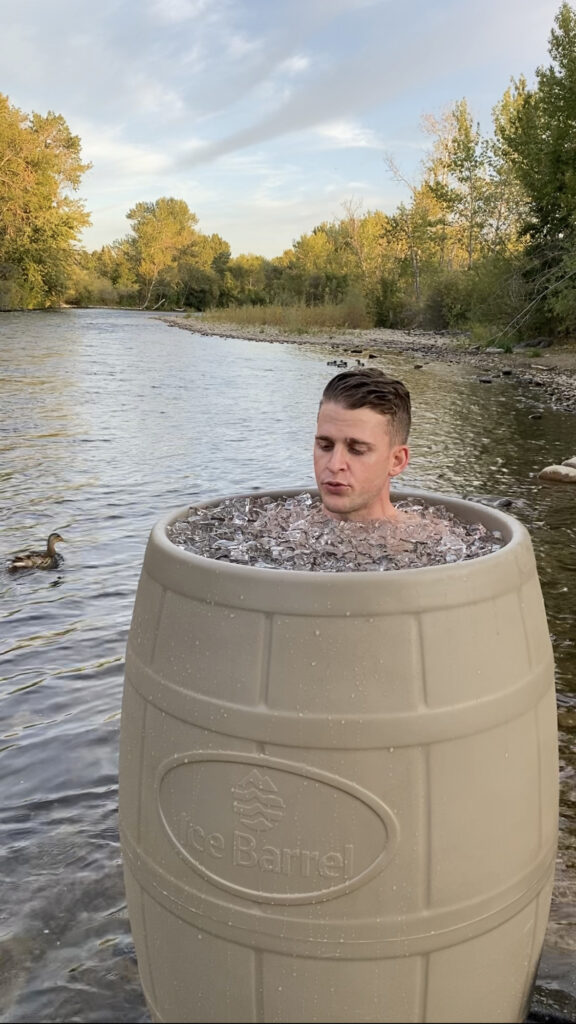How much cardio should I be doing in my training? How much running is too much running? Why should I ever do slow runs when fast, hard ones will make me faster?
Unless you’ve been taught the ropes of proper training, these are questions that most people ask themselves at some point along the road of preparing their bodies for an event. What follows is a breakdown of the things you should know to be best prepared for your race, and avoid injury or over-tiredness.

It Starts With Your Heart
Knowing your resting heart rate and your max heart rate is key. Some people’s heart rates run high (mine is typically above average), while others (like Ryan Atkins’) run low.
Know the Zones
When doing cardio workouts, there are four different heart rate zones athletes and trainers typically refer to when talking training plans (I’ve included my own HR values for reference. Calculate your own for more accuracy):
-Recovery/easy: HR 55% of max (120-140 bpm. My heart rate on an easy run sits around 130-140, Ryan’s sits around 120bpm).
-Tempo: 65% of max (Mine is 155-170 bpm, Ryan’s is around 135-155)
-Threshold: 80% of max (175-190 bpm Ryan’s is around 155-172)
-V02 max: 100% (195-210bpm, aka your max heart rate, Ryan’s is around 172-185)
Don’t Overtrain
On average, athletes react well to 2-3 hard workouts per week when training for the kind of event/race distances we do in OCR. Do too many hard workouts and your body will become over-tired. A “hard workout” would mean your heart rate is at tempo, or higher. The type of “hard workouts” you do will depend on what you’re training for.
Off Season Training
In the off-season, usually from November to March, you want to be threshold workouts (80% of max). How long these workouts are will depend on what you’re training for. For example, if you’re training for the 8-hour Toughest Mudder series, you want these to be longer so your body is prepared for the length of the race.
Train for Distance
-10 minute warm-up
-Run one-mile 4-6 times at a threshold heart rate. Rest three minutes between each mile.
-Then, run 45 minutes at a tempo heart rate.
-10 minute cool down
Note: It may take time to work up to the length of this workout. If two of the one mile repeats are plenty for you, then start with that, with ten minutes of tempo afterwards. Listen to your body. Avoiding injury is key.
Train for Speed
If you’re training for sprint races, shorter threshold intervals are the way to go.
-10 minute warm-up
-6x 1km repeats at threshold heart rate-10 minute cool down
Do a 3-5K run for time into your training regimen every four weeks to test yourself. See if you can beat your best time.
Event Season Training
Your events/races will be your threshold workouts, so although you’ll still want to be doing intervals as part of your training (maybe one every two weeks), you’ll want to focus more on your V02 max now.
VO2 Max Training
VO2 max, or maximal oxygen uptake, indicates the amount of oxygen consumed in milliliters per kilogram of body weight per minute. The higher the number, the more oxygen you get to the muscles, and the faster or longer you run.. To train for this you’ll want to do workouts that are shorter, but very hard. Tabata workouts are a great example.
-4-5 minutes: Sprint for 20 seconds, then rest for 10 seconds-
-If you’re on a treadmill, put the incline up to 15% (most treadmills only go up to 15% grade).
-Turn the speed up to as fast as you can run for twenty seconds. It should be a solid sprint effort.
-After the 4-5 minutes, take a two-minute break and then repeat 1-2 more times.
You should be completely exhausted by the time you get to three sets. If you feel like you can do a fourth, then next time – RUN FASTER.
Aside from those 2-3 hard workouts per week, you should be filling your off days with recovery/easy runs and strength training. Long, easy runs are equally as important to incorporate into your training, as they will help build your endurance.
Above all else, listen to your body and figure out what works best for you.


